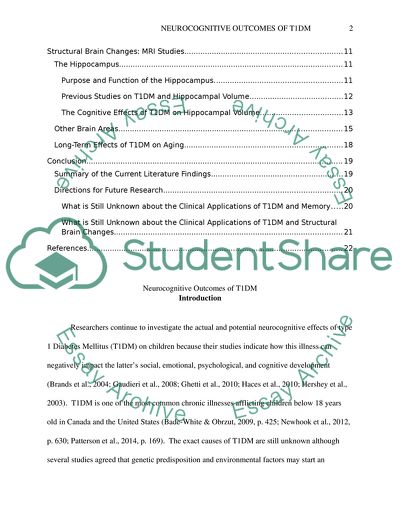Neurocognitive Outcomes of Type 1 Diabetes in Children Research Paper Example | Topics and Well Written Essays - 5500 words. https://studentshare.org/health-sciences-medicine/1842604-neurocognitive-outcomes-of-t1dm-overview-of-the-literature
Neurocognitive Outcomes of Type 1 Diabetes in Children Research Paper Example | Topics and Well Written Essays - 5500 Words. https://studentshare.org/health-sciences-medicine/1842604-neurocognitive-outcomes-of-t1dm-overview-of-the-literature.


